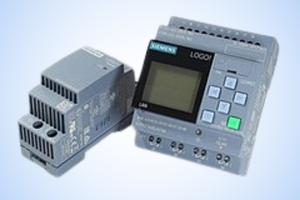PLC dealers and distributors in India
EKA is a leading Supplier, Reseller, Dealer and distributor of PLC from various international brands in India supporting critical applications.
A Programmable Logic Controller (PLC) is an industrial computer used to control automated processes in manufacturing and other industrial settings. Available in various sizes, PLCs can be customized with modules to fit specific applications. Known for their speed, reliability, and ease of programming, they are essential components in automation systems like SCADA and HMI, enabling the monitoring and control of machines, assembly lines, and robotic systems.
A PLC’s functions are divided into three main categories:
PLCs collect data from the plant floor by monitoring inputs from connected machines and devices.
Most PLCs today use one of the following 5 programming languages:
- Sequential Function Charts.
- Instruction List
- Function Block Diagram
- Structured Text
- Ladder Diagram

There are two main types of inputs:
Machine-Generated Inputs:
These come from devices and sensors connected to machines on the plant floor.
Human-Facilitated Inputs:
These are triggered manually, such as through buttons, switches, or panels.
